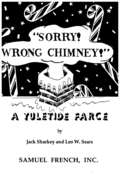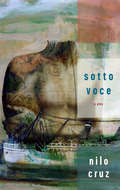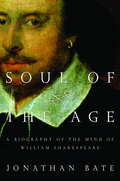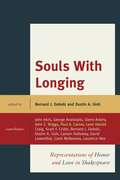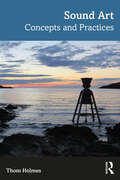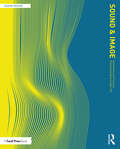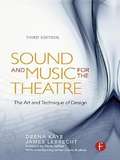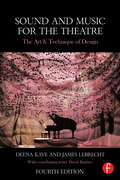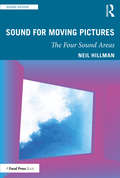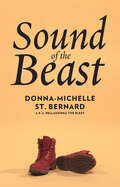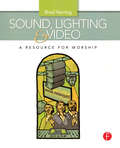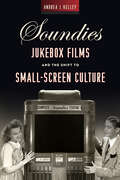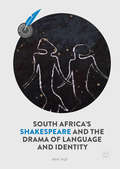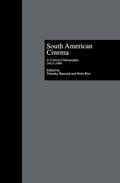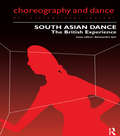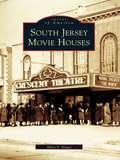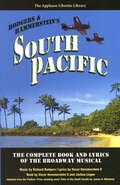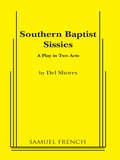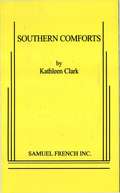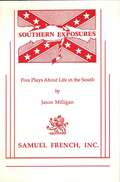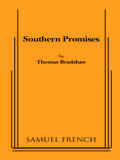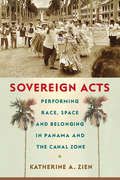- Table View
- List View
Sorrows and Rejoicings
by Athol Fugard"If there is a more urgent and indispensible playwright in world theatre than South Africa's Athol Fugard, I don't know who it could be."--Jack Kroll, NewsweekOne of the true contemporary masters of the stage, South African playwright Athol Fugard has written one of his most stunning works. Sorrows and Rejoicings explores the legacy of Apartheid on two women--one white, the other black--who on the surface seem to have little in common except for their love of one man, a white poet who is attached to the Karoo land of South Africa. The drama moves between past and present, reliving the poet's despondent years in exile and his eventual return to a new South Africa. With lyrical grace, Fugard once again demonstrates the human struggle to transcend the treacherous injustices of history.South African playwright, actor and director, Athol Fugard is one of the world's leading theatre artists, of whom The New Yorker has said, "A rare playwright, who could be a primary candidate for either the Nobel Prize on Literature or the Nobel Peace Prize."Also available by Athol Fugard: The Road to MeccaPB $11.95 0-930452-79-8 * USA My Children! My Africa!PB $10.95 1-55936-014-3 o USAStatementsPB $10.95 0-930452-61-5 * USA Blood Knot and Other PlaysPB $ 14.95 1-55936-020-8 * USA Valley SongPB $10.95 1-55936-119-0 * USA
Sorry! Wrong Chimney!
by Jack Sharkey Leo W. SearsFarce / 4m, 3f / Interior / David Tuttle is moonlighting as a department store Santa so that he can buy his wife a fur for Christmas. He tells her he's working late at the office, but she finds out he isn't at the office. A suspected other woman, hypnotism, the notorious Santa burglar Kris Kreigle and his gun toting fiancee, and a confused policeman add up to a rollicking tale that is hilarious Christmas or anytime entertainment.
Sotto Voce (TCG Edition)
by Nilo Cruz"The poetry of Cruz's writing is what those who love his work cite most often about his style, and Sotto Voce has that. Yet it also contains passages that are realistic, whimsical, sensual and heartbreaking. Cruz may be that rarity, a poet of the stage, but he is first and foremost a dramatist."--The Miami HeraldAriel Strauss, a Jewish Cuban man, strives to explore his cultural history when he encounters Bemadette Kahn, an older woman and famed novelist who seeks to relive hers. Cruz's passionate romantic drama takes place in a dreamscape, somewhere between history and memory, present and past. Sotto Voce is a work of dramatic poetry and an imaginative exploration of nostalgia and the ensuing heartbreak it comes with.Nilo Cruz was the first Latino playwright to win the Pulitzer Prize for Drama for his play Anna in the Tropics. His other plays include Night Train to Bolina, Dancing on her Knees, A Park in Our House, Two Sisters and a Piano, The Color of Desire, Hurricane, A Bicycle Country, Hortensia and the Museum of Dreams, Lorca in a Green Dress, Beauty of the Father, and translations of Lorca's Doña Rosita the Spinster and The House of Bernarda Alba. He is the third recipient of the Greenfield Prize, a $30,000 grant to produce new work.
Soul of the Age
by Jonathan Bate"Soul of the Age" is the most artful, intriguing, and satisfying study of the mind of William Shakespeare we now possess . . . A major achievement from a master of Shakespeare studies--David Armitage, professor of history, Harvard University.
Souls With Longing: Representations of Honor and Love in Shakespeare
by Bernard J. Dobski Dustin A. GishIn Souls With Longing, we become more keenly aware of our own humanity and come to know ourselves more profoundly. As the abiding popularity of his works aptly demonstrates, Shakespeare’s unforgettable portraits of souls with longing—his representations of honor and love—continue to exert undeniable sway over our political, moral, and romantic imaginations.
Sound Art: Concepts and Practices
by Thom HolmesSound Art offers the first comprehensive introduction to sound art written for undergraduate students. Bridging and blending aspects of the visual and sonic arts, modern sound art first emerged in the early 20th century and has grown into a thriving and varied field. In 13 thematic chapters, this book enables students to clearly grasp both the concepts behind this unique area of art, and its history and practice. Each chapter begins with an exploration of key ideas and theories, followed by an in-depth discussion of selected relevant works, both classic and current. Drawing on a broad, diverse range of examples, and firmly interdisciplinary, this book will be essential reading for anyone studying or teaching the theory, history, appreciation, or practice of sound art.
Sound and Image: Aesthetics and Practices (Sound Design)
by Andrew Knight-HillSound and Image: Aesthetics and Practices brings together international artist scholars to explore diverse sound and image practices, applying critical perspectives to interrogate and evaluate both the aesthetics and practices that underpin the audiovisual. Contributions draw upon established discourses in electroacoustic music, media art history, film studies, critical theory and dance; framing and critiquing these arguments within the context of diverse audiovisual practices. The volume’s interdisciplinary perspective contributes to the rich and evolving dialogue surrounding the audiovisual, demonstrating the value and significance of practice-informed theory, and theory derived from practice. The ideas and approaches explored within this book will find application in a wide range of contexts across the whole scope of audiovisuality, from visual music and experimental film, to narrative film and documentary, to live performance, sound design and into sonic art and electroacoustic music. This book is ideal for artists, composers and researchers investigating theoretical positions and compositional practices which bring together sound and image.
Sound and Music for the Theatre
by Deena Kaye James LebrechtThe same loved book you've been using for years - now including everything you need to know about sound design for the theatre. This edition still focuses on aesthetics of sound design for the stage along with design approaches and techniques. You'll still get the in-depth discussion with leading sound designers and composers to see how the experts get the job done.BUT, this new third edition has swept out the old to bring you the new! Now included is all of the latest technical information that you will need including:*Information about Digital Audio Workstations as everyday tools for sound effects*Maximizing the Internet and computer as a major, important, every day tool for today's sound designers and also composer? as a 24-hour library*new roundtable forum discussion with sound reinforcement designers that uncovers the way they make and communicate aesthetic decision*A fresh look at technology used to build and execute shows (digital audio workstations, software, and your computer as creative management tool)*Everyday paperwork'new examples for sound plots and queue sheets to increase the variety of examples and so you can pick your best fit
Sound and Music for the Theatre: The Art & Technique of Design
by Deena Kaye James LebrechtCovering every phase of a theatrical production, this fourth edition of Sound and Music for the Theatre traces the process of sound design from initial concept through implementation in actual performances. The book discusses the early evolution of sound design and how it supports the play, from researching sources for music and effects, to negotiating a contract. It shows you how to organize the construction of the sound design elements, how the designer functions in a rehearsal, and how to set up and train an operator to run sound equipment. This instructive information is interspersed with 'war stores' describing real-life problems with solutions that you can apply in your own work, whether you're a sound designer, composer, or sound operator.
Sound and Sense in Contemporary Theatre: Mad Auralities
by Matthew TomkinsonThis book is among the first to consider the subject of mad auralities in theatre and performance, asking: what does it mean to hear and listen madly? Drawing widely upon mad studies, critical disability studies, theatre studies, sound studies, queer studies, and critical race theory, it seeks to explore the theatrical relationship between sound and mental health differences by examining a range of case studies in which audience members are immersed in auditory simulations of madness. Ultimately, however, this critical study investigates the shortcomings of simulation as a representational practice, in keeping with the critical tradition of disability studies and mad studies.
Sound for Moving Pictures: The Four Sound Areas (Sound Design)
by Neil HillmanSound for Moving Pictures presents a new and original sound design theory called the Four Sound Areas framework, offering a conceptual template for constructing, deconstructing and communicating all types of motion picture soundtracks; and a way for academics and practitioners to better understand and utilize the deeper, emotive capabilities available to all filmmakers through the thoughtful use of sound design. The Four Sound Areas framework presents a novel approach to sound design that enables the reader to more fully appreciate audience emotions and audience engagement, and provides a flexible, practical model that will allow professionals to more easily create and communicate soundtracks with greater emotional significance and meaning. Of obvious benefit to sound specialists, as well as motion picture professionals such as film producers, directors and picture editors, Sound for Moving Pictures also provides valuable insight for others interested in the subject; such as those involved with teaching soundtrack analysis, or those researching the wider topics of film studies and screen writing.
Sound of the Beast
by Donna-Michelle St. Bernard"Compassion is good, but it’s just motivation. Cars need engines. Movements need mobilization." Through spoken word, storytelling and hip hop, acclaimed wordsmith Donna-Michelle St. Bernard illuminates racial discrimination, the suppression of expression and the trials of activism. Her experience as a Canadian emcee is woven through with allusion to Tunisian emcee Weld El 15’s unjust imprisonment for rhymes against a regime. This story creates a space to reflect on how we are connected to the systems that oppress us, and how we can empower each other to rise up.
Sound, Lighting and Video: A Resource for Worship
by Brad HerringLights, Camera,Worship! is a manual for all of your technical needs. To draw people into your church with incredible worship experiences, you need to learn more about how to get the most from your lighting, sound, video, and projection systems. This is your one stop resource!Written by an experienced professional and consultant, this book will show you how to successfully run the major components that, done correctly, will make your church presentation the absolute best it can be and will draw more people in! This is packed with information that will not only show you how to use the technology, but how to troubleshoot and problem-solve in the areas you need it most from running a new control board to uniting your lighting and audio visual systems as one integrated unit. This won't just show you how to operate your systems - it will make your production go from OK to WOW!
Soundies Jukebox Films and the Shift to Small-Screen Culture (Techniques of the Moving Image)
by Andrea J. KelleySoundies Jukebox Films and the Shift to Small-Screen Culture is the first and only book to position what are called “Soundies” within the broader cultural and technological milieu of the 1940s. From 1940 to 1946, these musical films circulated in everyday venues, including bars, bowling alleys, train stations, hospitals, and even military bases. Viewers would pay a dime to watch them playing on the small screens of the Panoram jukebox. This book expands U.S. film history beyond both Hollywood and institutional film practices. Examining the dynamics between Soundies’ short musical films, the Panoram’s film-jukebox technology, their screening spaces and their popular discourse, Andrea J. Kelley provides an integrative approach to historic media exhibition. She situates the material conditions of Soundies’ screening sites alongside formal considerations of the films and their unique politics of representation to illuminate a formative moment in the history of the small screen.
South Africa's Shakespeare and the Drama of Language and Identity (Global Shakespeares)
by Adele SeeffThis volume considers the linguistic complexities associated with Shakespeare’s presence in South Africa from 1801 to early twentieth-first century televisual updatings of the texts as a means of exploring individual and collective forms of identity. A case study approach demonstrates how Shakespeare’s texts are available for ideologically driven linguistic programs. Seeff introduces the African Theatre, Cape Town, in 1801, multilingual site of the first recorded performance of a Shakespeare play in Southern Africa where rival, amateur theatrical groups performed in turn, in English, Dutch, German, and French. Chapter 3 offers three vectors of a broadening Shakespeare diaspora in English, Afrikaans, and Setswana in the second half of the nineteenth century. Chapter 4 analyses André Brink’s Kinkels innie Kabel, a transposition of Shakespeare’s The Comedy of Errors into Kaaps, as a radical critique of apartheid’s obsession with linguistic and ethnic purity. Chapter 5 investigates John Kani’s performance of Othello as a Xhosa warrior chief with access to the ancient tradition of Xhosa storytellers. Shakespeare in Mzansi, a televisual miniseries uses black actors, vernacular languages, and local settings to Africanize Macbeth and reclaim a cross-cultural, multilingualism. An Afterword assesses the future of Shakespeare in a post-rainbow, decolonizing South Africa. Global Sha Any reader interested in Shakespeare Studies, global Shakespeare, Shakespeare in performance, Shakespeare and appropriation, Shakespeare and language, Literacy Studies, race, and South African cultural history will be drawn to this book.
South African Essays on 'Universal' Shakespeare
by Chris ThurmanSouth African Essays on ’Universal’ Shakespeare collects new scholarship and extant (but previously unpublished) material, reflecting the changing nature of Shakespeare studies across various ’generation gaps’. Each essay, in exploring the nuances of Shakespearean production and reception across time and space, is inflected by a South African connection. In some cases, this is simply because of the author’s nationality or institutional affiliation; in others, there is a direct engagement with what Shakespeare means, or has meant, in South Africa. By investigating the universality of Shakespeare from both implicitly and explicitly ’southern’ perspectives, the book presents new possibilities for considering (and reassessing) shifting manifestations of Shakespeare’s work in major Shakespearean ’centres’ such as Britain and the United States, as well as across the global North and South.
South American Cinema: A Critical Filmography, l915-l994 (Historical Dictionaries Of Literature And The Arts Ser.)
by Timothy Barnard Peter RistFirst Published in 1996. This text looks at the cinema from the countries of Argentina, Brazil, Canada, Chile, Colombia, Cuba, United States, Uruguay and Venezuela. Presented by country and date order it includes the silent black and white Gaucho films of 1915 to the colour films coming out of Venezuela in 1991. Each entry provides a summary of the film content, its context, production and significance in the genre. It includes an index and glossary of Brazilian (Portuguese or African) Terms and film terms.
South Asian Dance: The British Experience
by Alessandra IyerFirst Published in 1998. Routledge is an imprint of Taylor & Francis, an informa company.
South Jersey Movie Houses
by Allen F. HaussSince the early 1900s, when the first moving images flickered on the screens of storefront nickelodeons, going to the movies has been an integral part of life across America. By the 1950s, there were over 230 theaters in southern New Jersey, ranging from lavish palaces like the 2,000-seat Stanley in Camden to modest venues like the 350-seat Little in Haddonfield. Today, sadly, less than a dozen remain standing, and most of those are now used for other commercial purposes. Only the Broadway in Pitman continues to operate as the last of the original motion-picture palaces. South Jersey Movie Houses is a pictorial tour of the theaters that once raised their curtains to audiences across the southern part of the state. It offers a nostalgic look at their neon marquees and silver screens, bringing back memories of Saturday matinees, 3-D glasses, and movie date nights.
South Pacific: The Complete Book and Lyrics of the Broadway Musical
by Richard Rodgers Oscar Hammerstein IIWinner of the Pulitzer Prize for Drama and the Tony for Best Musical, South Pacific flourished as the golden musical of Broadway's post-WWII golden era. Nearly 60 years after its 1949 premiere, South Pacific returned to Broadway in Lincoln Center Theater's glorious Tony-winning production, setting box-office records and bringing this timely and timeless musical to new generations. With a score by Rodgers & Hammerstein and a libretto by Hammerstein and Joshua Logan, based on James A. Michener's Pulitzer Prize-winning novel, Tales of the South Pacific, this landmark musical combines compassionate love stories with the saga of a world at war. Richly developed characters are faced with life-changing moments in a complex world, their thoughts and yearnings powerfully expressed in the lyrics to such songs as “This Nearly Was Mine ” “Younger Than Springtime ” and “Some Enchanted Evening.”
Southern Baptist Sissies
by Del ShoresFollows the journey of four gay boys in the Baptist Church. Storyteller Mark Lee Fuller tries to create a world of love and acceptance in the church and clubs of Dallas, Texas, while desperately trying to find a place to put his own pain and rage. The world Mark creates also includes two older barflies, Peanut and Odette, whose banter takes the audience from hysterical laughter to tragedy and tears. With a theme of religion clashing with sexuality, the play opened to rave reviews in Los Angeles during its original run in 2000 and became the most awarded play of the year, winning the GLAAD Media Award for Outstanding LA Theater Production, as well as multiple LA Weekly Theater Awards, Los Angeles Critics Awards, Ovation Awards, Backstage West Garland Awards and Robby Awards.
Southern Comforts
by Kathleen ClarkComedy / 1m, 1f / Interior / Some people need continuous change in order to feel vital and alive. Others are terrified of unsettling the peace that they have established. Two-time O'Neill Playwright's Conference participant Kathleen Clark uses her words to detail this tour-de-force journey of a widow and widower who meet later in life and find a way into each other's hearts. Southern Copmforts is a beautiful exploration of the intimate workings of all relationships. In a sprawling New Jersey Victorian, a taciturn Yankee widower and a vivacious grandmother from Tennessee find what they least expected - a second chance at love. Their funny, awkward, and enchanting romance is filled with sweet surprise and unpredictable tribulation. Told with warmth and perceptive humor, this off-Broadway success is an affecting, late-in-life journey of compromise and rejuvenation, of personal risk and the rewards of change.
Southern Promises
by Thomas BradshawDrama / Characters: 6m, 2f, with doubling / Simple Set / When the master of the plantation dies, he wills his slaves to be freed, but his wife doesn't think that good property should be squandered. Pandemonium ensues. The play is inspired by the true story of Henry Box Brown who escaped to the north by mailing himself in a box. Southern Promises provides a unique portrait of the old south. Bradshaw was named Playwright of the year by the theater blog KUL-That Sounds Cool and Southern Promises was named among the best performances of Stage and Screen for 2008 in The New Yorker. "Slowly, almost single-handedly, a twenty-eight-year-old black playwright named Thomas Bradshaw has been taking on the idea of race in the theatre. At the same time, he has sliced open the pretensions of the white avant-garde with a wittily glistening axe. In his new play, Southern Promises (at Performance Space 122), one can catch a glimpse of Bradshaw's anarchic gifts." -The New Yorker. "It's a striking, challenging piece that studies the abuse of power and the liquidity of morality." -NYTheatre.com. "Likely to leave you speechless"-The New York Times. "Thomas Bradshaw's deeply twisted, coolly brutal period drama Southern Promises" -Village Voice.
Sovereign Acts: Performing Race, Space, and Belonging in Panama and the Canal Zone
by Katherine A. ZienSovereign Acts explores how artists, activists, and audiences performed and interpreted sovereignty struggles in the Panama Canal Zone, from the Canal Zone’s inception in 1903 to its dissolution in 1999. In popular entertainments and patriotic pageants, opera concerts and national theatre, white U.S. citizens, West Indian laborers, and Panamanian artists and activists used performance as a way to assert their right to the Canal Zone and challenge the Zone’s sovereignty, laying claim to the Zone’s physical space and imagined terrain. By demonstrating the place of performance in the U.S. Empire’s legal landscape, Katherine A. Zien transforms our understanding of U.S. imperialism and its aftermath in the Panama Canal Zone and the larger U.S.-Caribbean world.

